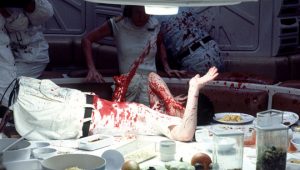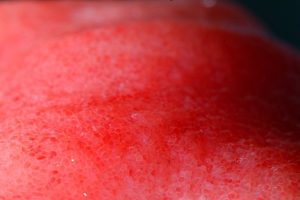 I recently went on a charming little journey through time to track down a quote attributed to the poet Samuel Taylor Coleridge (1772-1834), “we do not feel horror because we are haunted by a sphinx, we dream a sphinx in order to explain the horror that we feel”. The context and the journey through references adds beautifully to my earlier post about dreams and nightmares. Coleridge was disturbed by his nightmares throughout his life and shared his thoughts about their origins.
I recently went on a charming little journey through time to track down a quote attributed to the poet Samuel Taylor Coleridge (1772-1834), “we do not feel horror because we are haunted by a sphinx, we dream a sphinx in order to explain the horror that we feel”. The context and the journey through references adds beautifully to my earlier post about dreams and nightmares. Coleridge was disturbed by his nightmares throughout his life and shared his thoughts about their origins.
My introduction to the Coleridge quote was with the recent (April 2017) science fiction novel “Void Star” by Zachary Mason:
[The character Thales says] “It looks like water to me.”
[The magician replies] “There isn’t even an image of water, unless you look closely – mostly the illusion’s just composed of words. Whatever’s missing just gets filled in, mostly with your own memories, sometimes with someone else’s. How to explain? Coleridge said images in dreams represent the sensation we think they cause. We don’t feel horror because we see a sphinx, but dream of a sphinx to explain our horror. In the same way, we see a city, though there is no city, just a handful of dreamers, bound together, sharing a dream. But in fact there are no dreamers, just a tissue of memory, and vortices moving through it, weaving it together and letting it decay.”
The idea that words are illusions links so well to the idea that autism exists on the boundary of language. As soon as we have words to describe our senses, we lose the direct connection to the sensory experience. Jacques Lacan wrote that “the symbol first manifests itself as the killing of the thing” (in The Function and Field of Speech and Language in Psychoanalysis, Ecrits, 1966). We only see the world through the human filter of words, losing all the richness and depth of the noise and distraction of the real world. This assumes that our minds are effectively selecting the relevant from the irrelevant. For example, if an unexpected noise distracts or surprises you, it may effectively disappear from your consciousness as soon as you identify the sound as “dishwasher”. If you see a room full of chairs, they may lose their individual identities and differences as soon as you classify them as “chair”. Autistic people might never quite leave the raw sensory world into language, remaining in touch with the sensory world, the distraction of real-life dishwashers and the differences between each and every chair in a room. They may be more distractible (to the point of ADD/ADHD), but also the first person to notice change and difference – a new chair, or a failing dishwasher pump.
Senses and dreams
I sleep lightly and am frequently woken by noises or changes in light. My dreams can be very intense and seem to have lasted ages, culminating in a sound or change that is still there when I am startled awake. I once dreamed of a holiday with a mountain road trip, ending in a screeching crash and when I woke up there was a crashed car in the road outside, still rocking on its springs. My mind had constructed a lengthy narrative holiday road trip and provided all the impressions of the sensory experiences leading up to the startling noise. I once dreamed that the cat was stealing the Hi-Fi and got up to hear late-night drinkers supporting themselves against the back wall.

When I was recovering from stitches in my abdomen, I had recurrent nightmares that a sneeze or cough would explode my internal organs all over the ceiling (like John Hurt in the film Alien), a disturbing thought which continued into the daytime. Later on I had nightmares of having swallowed a fishing hook, on a line attached to the wall behind my head, again continuing into waking thoughts. When I had a follow-up CT scan I was terrified that the staples would melt inside me and drip out through my spine, like The China Syndrome, even though I was certain that this was irrational and impossible. The nurses were brilliantly supportive and quite happy to let me take detailed close-up photographs of my surgery, to see the reality as opposed to my rabid imaginings. One of the key-workers at Aspect has told me this is called “Making Friends with your Fears”, and it has helped a great deal – apart from anything else, the interior of the human body is fascinating and beautiful.
The Sphinx
Strangely, it seems that Coleridge may not have written the words widely attributed to him, and all the quotations I can find end with publications by the Spanish poet and writer Jorge Luis Borges (1899-1986), who seems to have re-imagined Coleridge’s words in the short story Ragnarök (1959):
“The images in dreams, wrote Coleridge, figure forth the impressions that our intellect would call causes; we do not feel horror because we are haunted by a sphinx, we dream a sphinx in order to explain the horror that we feel. If that is true, how might a mere chronicling of its forms transmit the stupor, the exultation, the alarms, the dread, and the joy that wove together that night’s dream? I shall attempt that chronicle, nonetheless; perhaps the fact that the dream consisted of but a single scene may erase or soften the essential difficulty.”
The mind manages to search past experiences and imaginations to find something that explains the dream, because the senses have alerted something that requires explanation. The something might be a recent experience, the emotions of an unresolved daytime event or a physical sensation. Borges was more explicit that “the dream searches for explanations” when he used this scene again in Seven Nights (1984):
“Let us return to Coleridge. He says it doesn’t matter what we dream, that the dream searches for explanations. He gives an example: a lion suddenly appears in this room, and we all are afraid; the fear has been caused by the image of the lion. But in dreams the reverse can occur. We feel oppressed, and then search for an explanation. I, absurdly but vividly, dream that a sphinx has lain down next to me. The sphinx is not the cause of my fear, it is an explanation of my feeling of oppression. Coleridge adds that people who have been frightened by imaginary ghosts have gone mad. On the other hand, a person who dreams a ghost can wake up and, within a few seconds, regain his composure.”
My own sensations of helplessness continued into dreams, requiring explanation as a scene from “Alien” and sharp, visceral tug of stitches required explanation, provided by a remembered scene from “SS-GB”.
Hunt for the source
When I searched for sphinxes, lions and dreams in Coleridge’s works I came up blank. He did return to the theme of dreams and nighmares frequently, and attributed some of his most notable work to the intense dreams provoked by opium addiction. But no horror of sphinxes. Project Gutenberg and archive.org are wonderful resources for books that are not in copyright, including almost everything by Samuel Taylor Coleridge, in a variety of formats from plain text to eBook.
I found what may be the source of the quote in Lecture XII in the course of lectures in “Coleridge’s Essays & Lectures on Shakspeare & Some Other Old Poets & Dramatists” (1907):
“It is a general, but, as it appears to me, a mistaken Opinion, that in our ordinary Dreams we judge the Objects to be real. I say, our ordinary Dreams: because as to the Night-mair the opinion is to a considerable extent just. But the Night-mair is not a mere Dream, but takes place when the waking State of the Brain is re-commencing, and most often during a rapid alternation, a twinkling as it were, of sleeping and waking . . . the mind, I say, in this case deceived by past experience attributes the painful sensation received to a correspondent Agent – An assassin, for instance, stabbing at the Side, or a Goblin sitting on the Breast, &c – . . . Add to that the Impressions of the Bed, Curtains, Room &c received by the Eyes in the half-moments of their opening blend with, & add vividness & appropriate distance to, the Dream-Image <which returns> when they close again: and thus we unite the Actual Perceptions, or their Immediate Reliques, with the phantoms of the inward Sense – and thus so confound the half-waking, half-sleeping Reasoning Power, that we actually do pass a positive judgement in for the reality of what we see & hear: tho’ often accompanied by doubt and self-questioning, which . . . as I have myself experienced will at times become se strong <enough> even before we awake, to convince us, that it is what it is – the Night-Mair.”
And this was well worth the search because it is such an accurate portrayal of the waking panics I have, with a very real physical sensation – a sound, light or pain – blended with other very real objects, all blended with illusions to explain the unexpected.
Incidentally ..
The mind is a very powerful (and often unguided) tool. There are some very practical techniques that can be brought to guiding the mind before sleep. “Monster spray” (water in a mister bottle) can prevent monsters under the bed. Dream catchers can trap the frightening elements of a dream. A worry angel is a small character in a matchbox, who you tell your fears to and then close before bed. Obviously (but most of us ignore the obvious) a distraction-free, comfortable bedroom without any stressful reminders of work, conflict or chores is critical – who doesn’t have a phone, electronic device, TV, car keys, files from work or unused exercise equipment in their bedroom?

In my own case I have found photography a helpful form of grounding myself and filtering the world. I have been assembling a series of images of the scar, from surgery to healed, into an amazing animated video of the healing process, which I will spare you here. The photograph here is an approximately x5 magnification of the internal surface of my intestine, showing the villi that provide a massive internal surface area to absorb nutrients from food. It is fascinating and beautiful, and the process of digestion is phenomenally complex and varied. It is not going to explode on the ceiling. And how many people have photographed their own intestines?